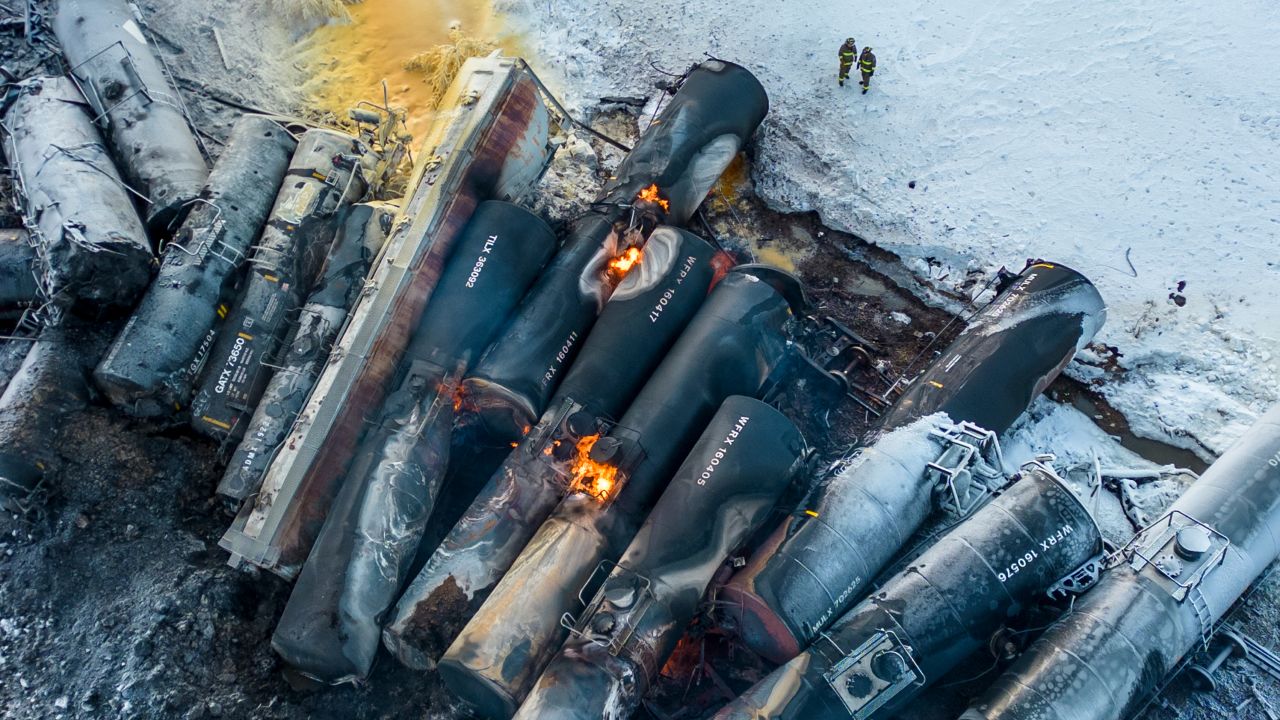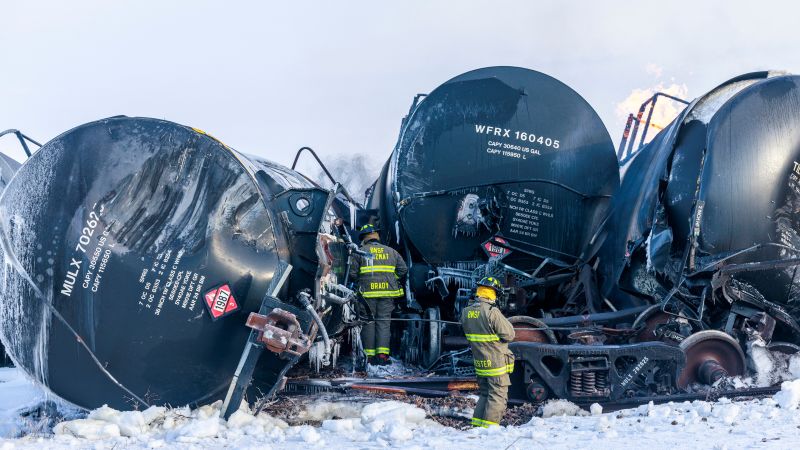CNN
—
The day after a train carrying a highly flammable chemical derailed and burst into flames in a small city in southwestern Minnesota, crews are still working to clear the area as officials reassure residents the water and air are safe.
Of the 22 cars that derailed in Raymond, Minnesota, Thursday morning, four containing ethanol ruptured and caught fire, the US Environmental Protection Agency said. Other cars carrying the substance were also at risk of releasing the chemical, the EPA said.
Other cars that derailed contained corn syrup, the Kandiyohi County Sheriff’s Office said. No injuries have been reported.
Sen. Amy Klobuchar said at a Friday news conference at the site that it “seems” there is no contamination within the soil.
“No one was hurt. The ground is good. The air is good. So, let’s just see what we can do going forward to make sure it does not happen again,” the Minnesota Democrat said.
There are currently 100 people at on the scene of the derailment cleaning up the cars. The National Transportation Safety Board is investigating, Klobuchar said.
The EPA said it has been at the crash site and monitoring the air for particulate matter and other compounds, noting there hasn’t been severe impact to the community thus far. And the train operator, BNSF Railway, said it did not find any impact to the drinking water and the air either, it said in a statement Thursday afternoon.
“Our concern, after the safety of the people here, was what was going to happen with the air and they have done multiple tests and they will continue to do that,” Klobuchar said.
The cars are expected to be running again – barring a major blizzard – in the next few days, according to Klobuchar and remediation efforts are also underway to help residents who were impacted by the incident.
Klobuchar said she and fellow Minnesota Sen. Tina Smith are looking into rail safety legislation in Congress.
In the meantime, Minnesota Gov. Tim Walz said in a tweet Friday that he’s “grateful for the swift, coordinated response” of local, state, and national partners.
“Yesterday’s derailment amplifies the critical need to pass my budget’s investments in rail safety to prevent this from happening again,” Walz said.

The response to the derailment and fire included 28 fire departments, including several volunteer departments who remained at the crash late Thursday, the sheriff’s office had said in a post online.
The derailment happened around 1 a.m. Thursday in Raymond, a small city of some 800 residents.
Homes within a half-mile of the derailment were evacuated, but the order was lifted later in the day, according to the sheriff’s office.
The derailment in Minnesota comes less than two months after a Norfolk Southern train carrying hazardous chemicals crashed in the Ohio community of East Palestine.
The blaze burned for days, and toxic chemicals were released into the air and killed thousands of fish. Many residents there have complained of health problems after the derailment and raised concerns about the impact of the chemicals.

In Minnesota, preliminary information from the crash suggested 14 of the train’s 40 cars were carrying hazardous materials, “including ethanol, which was released – leading to a fire,” US Transportation Secretary Pete Buttigieg told CNN Thursday morning.
Ethanol can explode when mixed with vapor and air. Exposure to ethanol can lead to coughing, dizziness, the feeling of burning eyes, drowsiness and unconsciousness.
“Ethanol, like many chemicals, can be toxic if inhaled or comes into contact with skin or is ingested. But it requires a certain concentration to be a health hazard,” said Purdue University professor Andrew Whelton, an expert in environmental chemistry and water quality.
Ethanol is highly soluble in water, meaning it will be relatively easy to dilute.
“Dilution is one way to reduce the risk” of health issues from any water that may be contaminated with ethanol, Whelton said.
Note:- (Not all news on the site expresses the point of view of the site, but we transmit this news automatically and translate it through programmatic technology on the site and not from a human editor. The content is auto-generated from a syndicated feed.))



